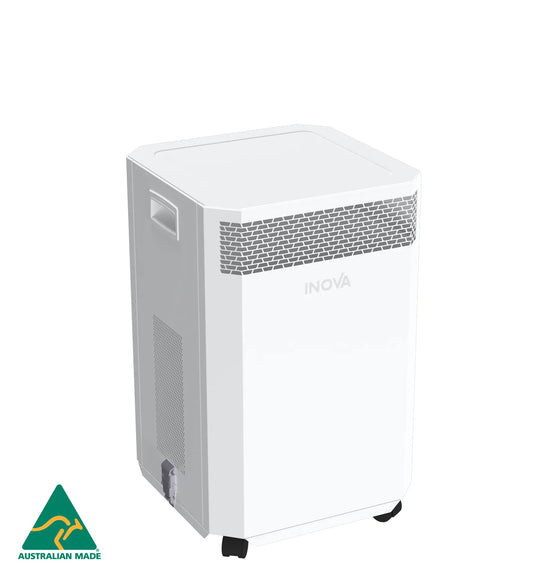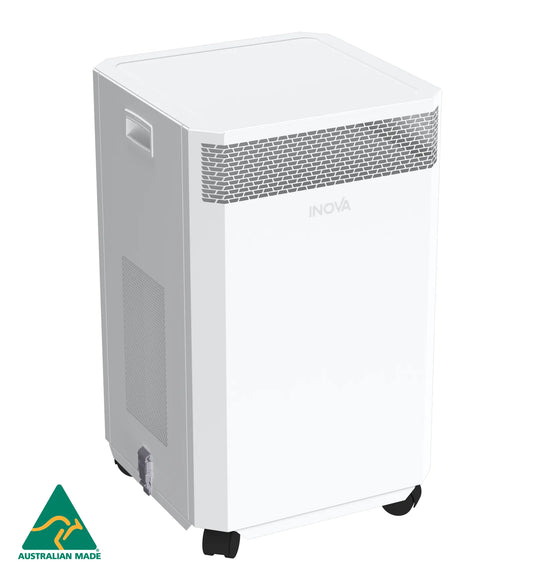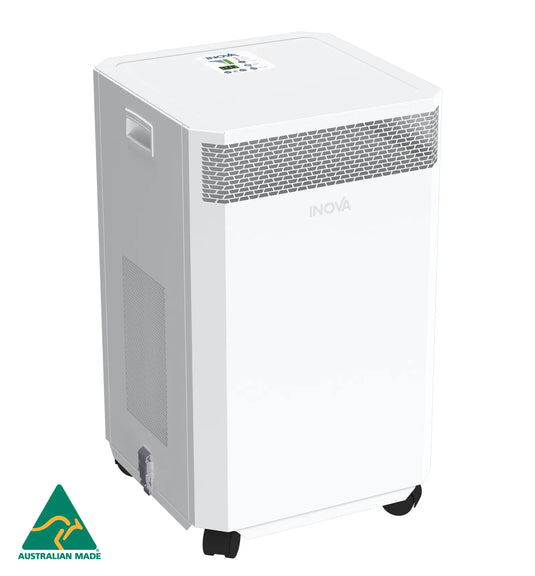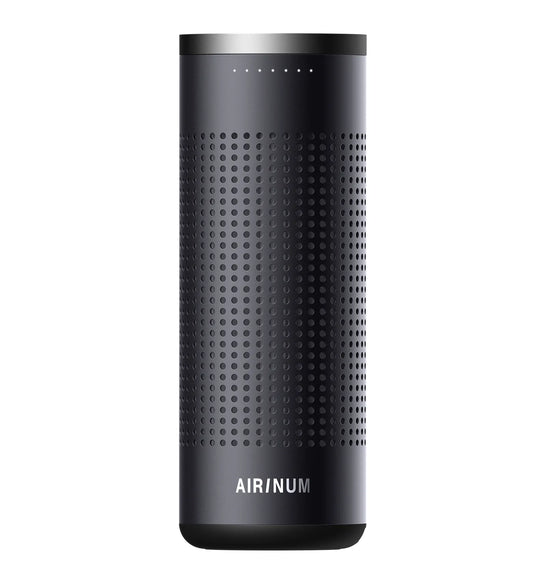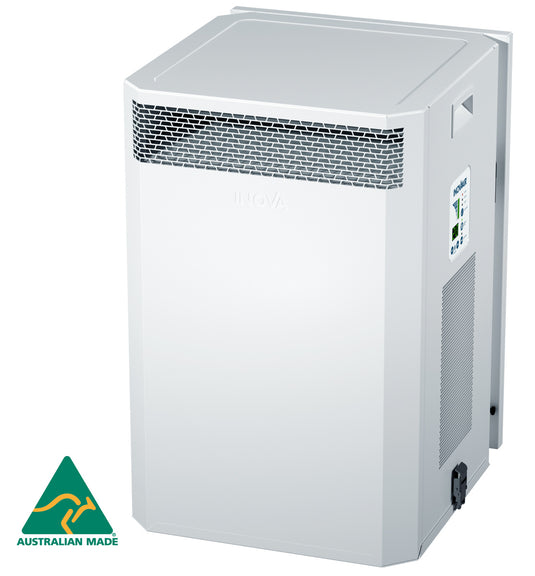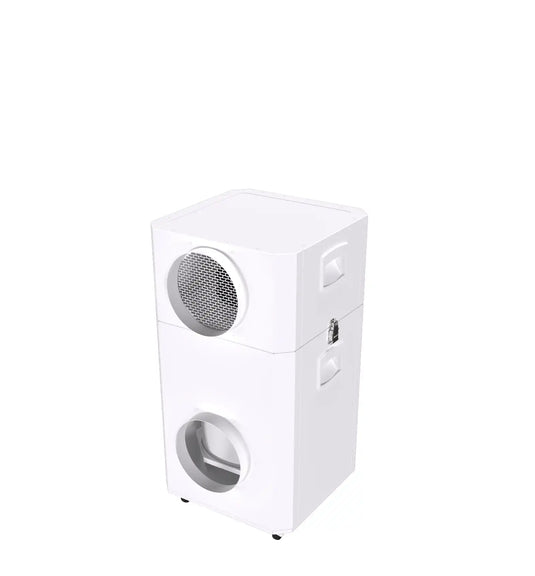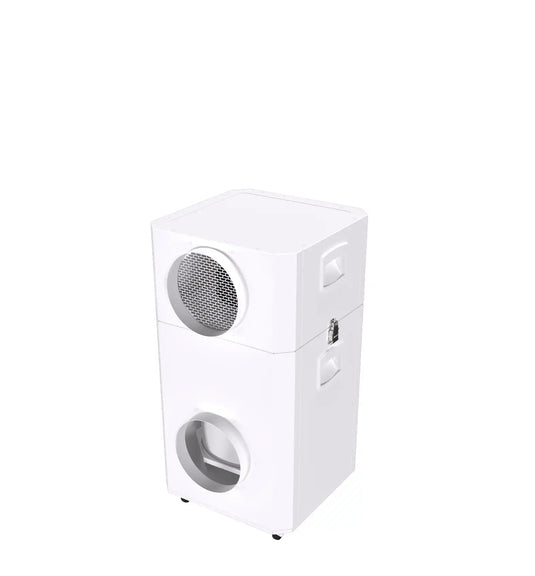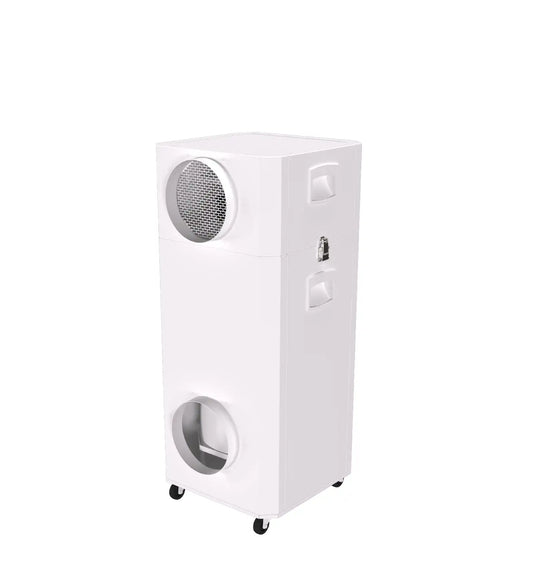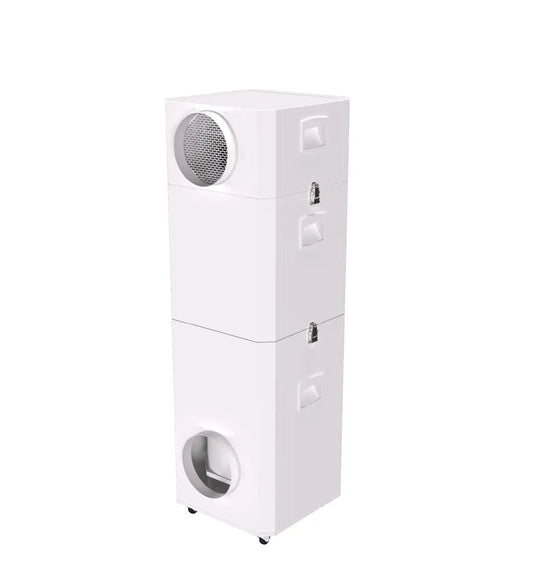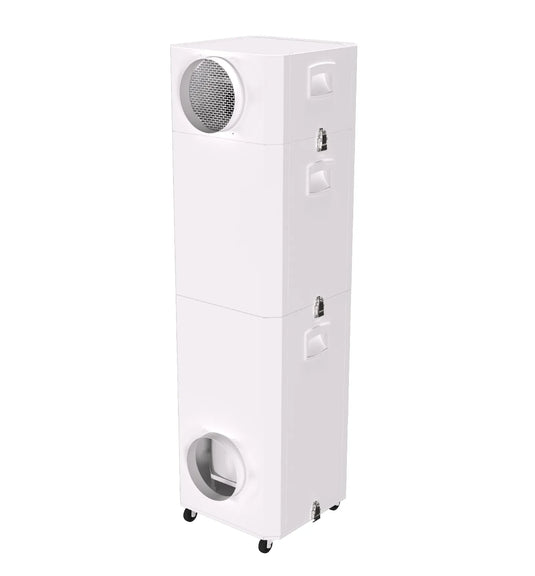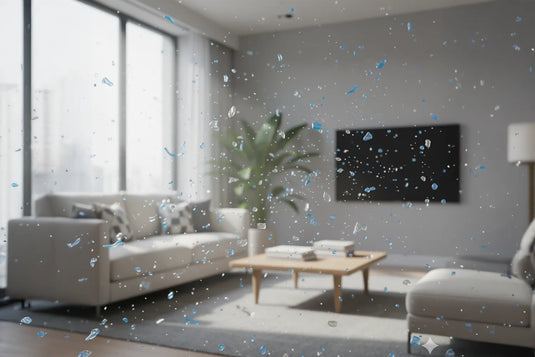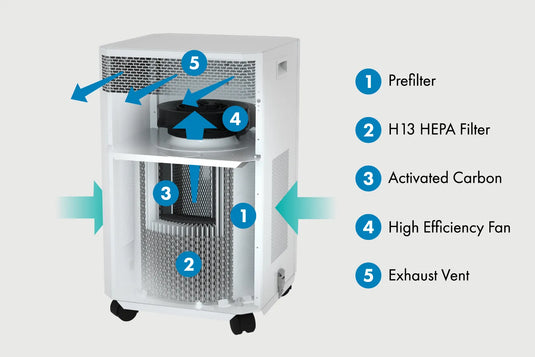How air quality in new homes impacts your health.
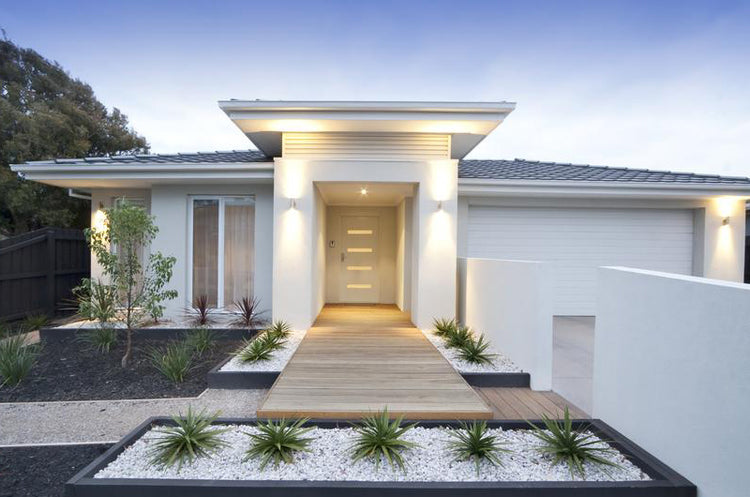
What many people don’t realise about newly built or renovated homes is that interior air quality can be a significant problem due to the presence of toxic chemicals, known as Volatile Organic Compounds (VOCs).
VOCs evaporate easily at room temperature and can be found in building materials, carpets, paint, sealants and glues, all which off-gas for years after a home has been renovated or built. Flame retardants in furniture and electrical goods, as well as cleaning products used in the home, emit VOCs too.
This is a common problem among our customers in Australia, who have experienced symptoms from new carpets, newly-finished polyurethane flooring, paints, and new furnishings like mattress and lounges. They experience elevated sensitivities (Multiple Chemical Sensitivities) and allergies, whereby they get symptoms from any exposure to chemicals and perfume. Headaches and fatigue are common as well.
Breathing in VOCs, even at low levels, for longer periods of time can also cause a range of other health issues, including:
- Skin and eye irritation
- Respiratory illness, including asthma
- Various forms of cancer
Formaldehyde, which is commonly used in building materials, paints and glues, is classified as a Group 1 carcinogen by the World Health Organisation. Long-term exposure to formaldehyde is linked to cancer of the nose and throat and an increased risk of leukaemia, it can take up to five years for formaldehyde to fully out-gas in a home.
Perfluorochemicals (PFOS) from stain repellents for carpets and furnishings, textiles, and non-stick cookware are commonly detected in pregnant women and studies have found these can take years to be cleared from the body.
Young children, pregnant women, people with asthma or chemical sensitivities are
particularly susceptible to health impacts associated with VOCs.
There is no VOC exposure standard for residential homes in Australia, and Australia’s Green Building Standards are outlined in milligram, whereas the US tests VOC levels down to nanograms.
Testing and exposure standards for VOCs (and other toxic chemicals) in Australia are inadequate, according to Nicole Bijlsma, Founder of the Australian College of Environmental Studies, because they fail to consider the health risks associated with low-level toxicants over a lifetime, they ignore the multiple routes of exposure and individual risk factors involved. There is no burden of proof on chemical manufacturers to prove their ingredients are safe.
While the best solution to avoid exposure to harmful VOCs in your home is to use non-toxic paints and building materials, this, of course, is beyond your control when you are moving into a home that is already built.
The next best solution is to ensure there is adequate ventilation in your home. Our air purifiers can remove VOCs from the air, thanks to a high-capacity activated carbon filter which catches chemical vapours from building materials, as well as those from cigarette smoke, toxic mould, fungus, mildew and car exhaust (which is also an important consideration if you live within 1000 metres of the main road – for more on why check out our blog post: ‘Could living near a main road be impacting your health?’).
Our air purifiers remove 99.95% of particles from the air and thus can address the vast majority of the problems that VOCs in new houses cause. To learn more about choosing an air purifier that’s right for you, check out this video:
Which Air Purifier Filter is Right for Me?
VOCs evaporate easily at room temperature and can be found in building materials, carpets, paint, sealants and glues, all which off-gas for years after a home has been renovated or built. Flame retardants in furniture and electrical goods, as well as cleaning products used in the home, emit VOCs too.
This is a common problem among our customers in Australia, who have experienced symptoms from new carpets, newly-finished polyurethane flooring, paints, and new furnishings like mattress and lounges. They experience elevated sensitivities (Multiple Chemical Sensitivities) and allergies, whereby they get symptoms from any exposure to chemicals and perfume. Headaches and fatigue are common as well.
Breathing in VOCs, even at low levels, for longer periods of time can also cause a range of other health issues, including:
- Skin and eye irritation
- Respiratory illness, including asthma
- Various forms of cancer
Formaldehyde, which is commonly used in building materials, paints and glues, is classified as a Group 1 carcinogen by the World Health Organisation. Long-term exposure to formaldehyde is linked to cancer of the nose and throat and an increased risk of leukaemia, it can take up to five years for formaldehyde to fully out-gas in a home.
Perfluorochemicals (PFOS) from stain repellents for carpets and furnishings, textiles, and non-stick cookware are commonly detected in pregnant women and studies have found these can take years to be cleared from the body.
Young children, pregnant women, people with asthma or chemical sensitivities are
particularly susceptible to health impacts associated with VOCs.
There is no VOC exposure standard for residential homes in Australia, and Australia’s Green Building Standards are outlined in milligram, whereas the US tests VOC levels down to nanograms.
Testing and exposure standards for VOCs (and other toxic chemicals) in Australia are inadequate, according to Nicole Bijlsma, Founder of the Australian College of Environmental Studies, because they fail to consider the health risks associated with low-level toxicants over a lifetime, they ignore the multiple routes of exposure and individual risk factors involved. There is no burden of proof on chemical manufacturers to prove their ingredients are safe.
While the best solution to avoid exposure to harmful VOCs in your home is to use non-toxic paints and building materials, this, of course, is beyond your control when you are moving into a home that is already built.
The next best solution is to ensure there is adequate ventilation in your home. Our air purifiers can remove VOCs from the air, thanks to a high-capacity activated carbon filter which catches chemical vapours from building materials, as well as those from cigarette smoke, toxic mould, fungus, mildew and car exhaust (which is also an important consideration if you live within 1000 metres of the main road – for more on why check out our blog post: ‘Could living near a main road be impacting your health?’).
Our air purifiers remove 99.95% of particles from the air and thus can address the vast majority of the problems that VOCs in new houses cause. To learn more about choosing an air purifier that’s right for you, check out this video:
Which Air Purifier Filter is Right for Me?
INOVA Air Purifier Models

